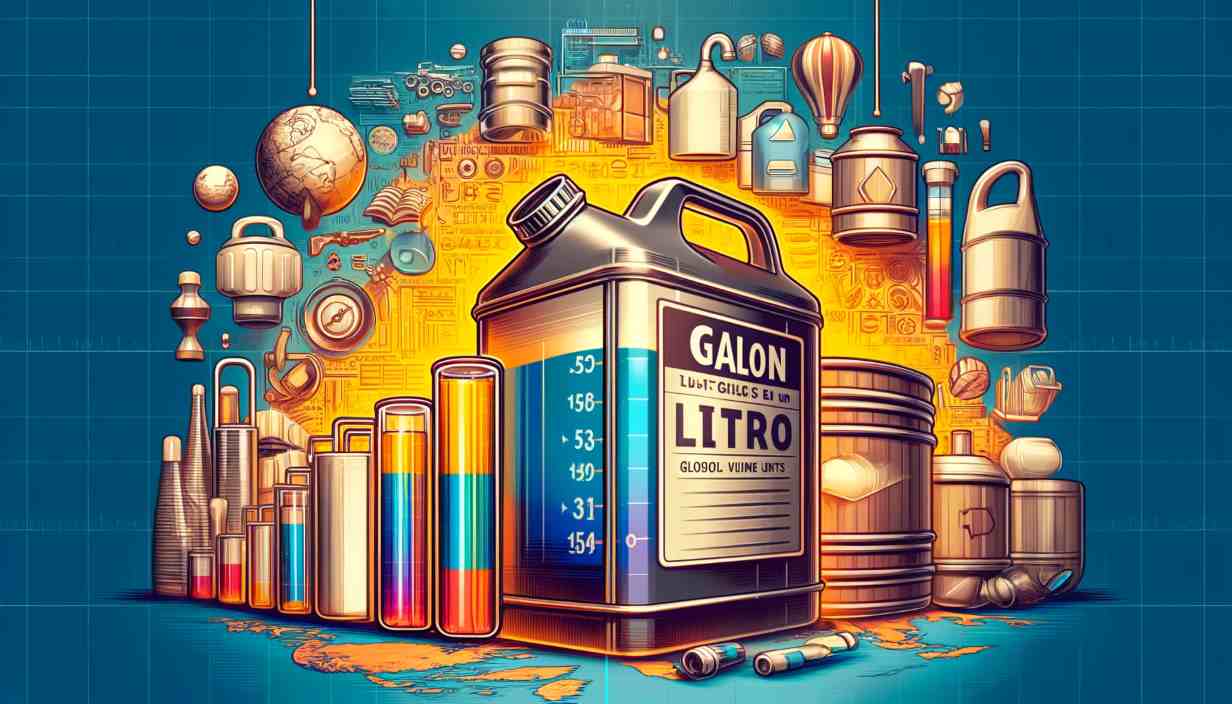Finding out “Cuanto Galon es un Litro” isn’t just a question about metric units; it’s a look into the interesting world of global volume units. As we travel through different countries and cultures, it becomes important to understand these numbers, both for school and for everyday life.
Getting to Know the Basics: Liters and Gallons
There is a measure of volume called the “liter” at the center of this debate. It’s used all over the world for many things, from counting liquids in the kitchen to figuring out how much fuel to put in cars. The liter is equal to the space of a square with sides that are 10 centimeters each. This gives you a concrete way to think about this measurement.
The gallon, on the other hand, is a measure unit in the imperial system that is mostly used in the United States. The U.S. gallon is equal to 231 cubic inches, which is about 3.785 liters. The different definitions of liters and gallons demonstrate the variety in measurement methods around the world.
Looking back at the history of measuring volume
Volume measurement has a long and interesting past. Each method is based on the history and society of the people who created it. The push for uniformity during the French Revolution led to the creation of the metric system, which stands for logic and common sense. As a part of this system, the liter is a reminder of how far science has come during this time.
In contrast, the gallon has roots in the wine and ale trade of medieval England. This historical background gives the imperial system a flavor of tradition and continuity, as it evolved organically over centuries.
Cuanto Galon es un Litro: Bridging the Metric and Imperial Systems
When we ask “Cuanto Galon es un Litro,” we’re essentially navigating the bridge between these two systems. For many, this conversion is a daily reality. Consider a British chef using an American recipe, or a Mexican scientist collaborating with a Canadian colleague. In these scenarios, understanding both liters and gallons becomes not just useful, but necessary.
This need for conversion has led to the development of tools and calculators that can instantly convert liters to gallons and vice versa. These tools are indispensable in a world where global collaboration is the norm.

Understanding volume units is useful in real life
Understanding how to measure volume is important for more than just academic reasons. Accurately measuring amount is very important in fields like cooking, cars, and science. In the field of cooking, for example, the difference between a liter and a gallon can make or break a plan. If you want to know about fuel economy in cars, you need to know about these numbers.
Also, in scientific study, where accuracy is very important, it is very important to understand and change volume units correctly for experiments and data analysis.
The Metric System is Becoming More Popular Around the World as a Way to Measure Volume.
There is a movement toward metrication around the world, and many countries have adopted the metric system because it is easy to use and matches all units. That being said, the US, along with some other countries, still predominantly uses the imperial system. This difference creates new problems and chances for education and partnership between countries.
“Cuanto Galon es un Litro” in Education
Educationally, the question of “Cuanto Galon es un Litro” offers an excellent opportunity for cross-system learning. It provides a practical context for students to understand and appreciate different measurement systems, fostering a more global perspective. Educators can use this topic to teach not only mathematics and science but also history and cultural studies.
Environmental Implications
The understanding of volume measurements also has environmental implications. In areas like water conservation and pollution control, being able to accurately convert and understand these units can play a crucial role in formulating strategies and solutions.
Future Directions
Looking forward, the dialogue between the metric and imperial systems, exemplified by the question “Cuanto Galon es un Litro,” will likely continue as globalization progresses. The ongoing challenge will be finding ways to ensure that this diversity in measurement systems does not become a barrier but rather enriches our global interactions.
Conclusion
The query “Cuanto Galon es un Litro” serves as a simple yet profound entry point into a world where measurement is as diverse as humanity itself. It shows not only our science interests but also our culture and political backgrounds. Navigating this complex, interconnected world, we must recognize and value diverse measurement methods to bridge gaps in our global society.








